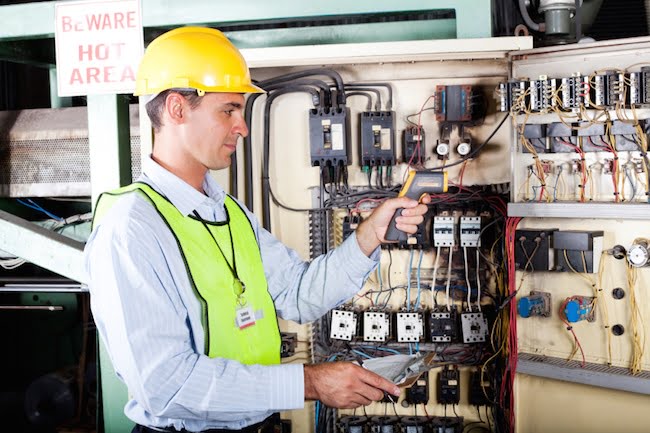What Proper Temperature Control Solutions Do for Enclosure Protection

It is not always obvious how many electrical problems are the result of electrical equipment overheating inside an electrical enclosure. Equipment particularly susceptible to this sort of problem are devices that incorporate electronics in their control systems. These include PLCs, VFDs, HMIs, soft starters, circuit breakers and similar types of equipment.
The prevalence of these devices means that proper temperature control solutions for electrical enclosures has become an important factor for ensuring trouble-free operation of electrical systems.
Symptoms of Poor Temperature Control
There are several symptoms that indicate the possibility that the enclosure temperature is too high. These include:
Nuisance tripping
If circuit breakers and other devices trip but there does not appear to be an overload situation, it’s likely the unexplained tripping is due to the device temperature being too high. Circuit breakers use thermal sensors and excessive heat may cause tripping at a current below the set point, especially if the overload setting is only slightly above the running current.
Unexpected equipment failure
Although modern electrical equipment is well designed, a high incidence of unexplained failures can often be traced back to the temperature of the equipment. The life of electrical equipment is related to its temperature and according to the Arrhenius equation is halved for every 18 °F increase in temperature.
PLC malfunction
This may occur if the PLC processor is placed where it is subject to high temperatures. Programs may not work correctly and memory registers are sometimes corrupted and lose their values.
HMI screens
Another symptom of excessive heat is when the touch screen on a HMI goes dark, is difficult to see or stops working altogether.
If you experience strange phenomena in an electrical control panel that are not easy to explain, the chances are that high equipment temperature has something to do with it.
There are several reasons why an electrical enclosure’s temperature may be too high:
Excessive heat load:
The heat generated inside the enclosure may be greater than the capacity of the enclosure’s cooling system. This may be due to poor design or subsequent modifications that have increased the heat load.
Poorly laid out enclosure:
It is also possible that sensitive equipment is placed right next to or above equipment which naturally runs hot. For example, VFDs generate a significant amount of heat and if this heat is directed at other equipment, overheating may occur. Another possibility is that the air flow to sensitive equipment is blocked by cables, equipment trays or other obstructions.
Blocked filters:
If air filters are blocked, airflow will be reduced, causing poor cooling. This applies not only to filtered fan installations, but also to air conditioners where filters protecting the condenser may be blocked. If there is excessive dust in the environment, high capacity filters may be required.
Faulty cooler:
Poor enclosure cooling could be caused by a faulty cooler or one that was incorrectly specified for the duty.
Air leaks:
Another common cause of overheating of air conditioned enclosures is air leaks through poorly sealed doors, cable entry points and holes in the enclosure.
If your electrical enclosures are overheating, follow these steps to bring the enclosure temperature under control and protect your equipment:
Provide adequate cooling:
As a first step, it’s necessary to establish the required cooling capacity. Assess the total heat load, and using an online enclosure cooling calculation, source a cooling solution with sufficient capacity to properly cool the enclosure. If you maintain a temperature of 95°F, it will ensure long equipment life, reliability and provide adequate cooling.
Modify the enclosure layout:
Make sure heat generating equipment like VFDs are placed in one area, side by side in accordance with the manufacturer’s recommendations, and as close to the cool air inlet and outlet as possible. Remove obstructions that restrict airflow and move heat sensitive equipment to locations near the bottom of the enclosure where it is cooler.
Seal the enclosure:
Seal all openings when using a closed loop air conditioner or heat exchanger, especially the enclosure doors and cable entry points to prevent air leakage
Maintain filters:
If the location is dusty, install high capacity air filters and implement a regular cleaning schedule.
Install remote alarms:
Ensure the enclosure temperature is monitored by installing remote monitoring equipment to warn of high temperatures that may indicate a cooling problem.
If you need help assessing the right temperature control solution, contact the Expert Team at Thermal Edge. They are conveniently located and can provide advice on how to solve tricky enclosure cooling problems.

